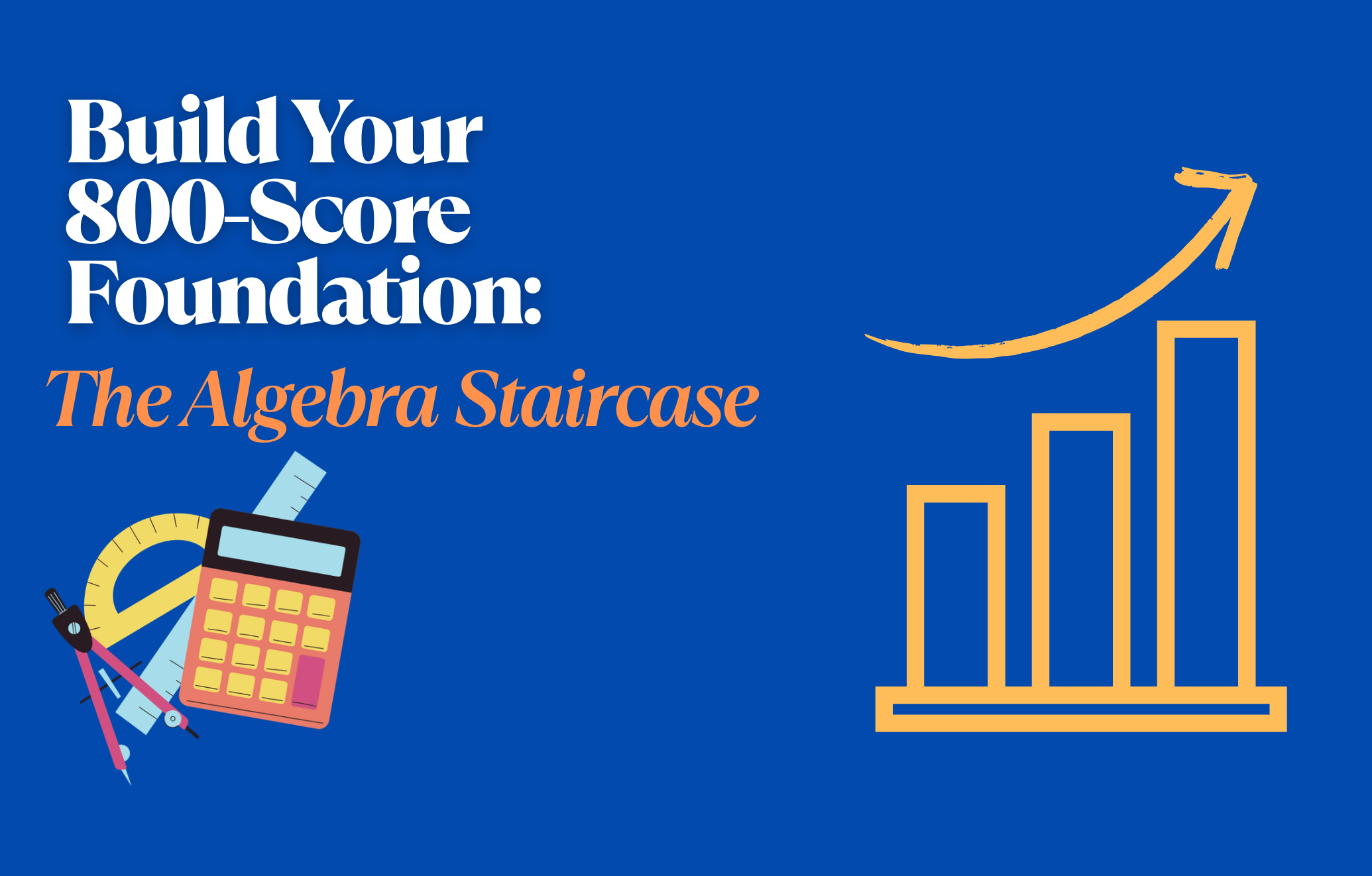Master Digital SAT Math: The PPIE Equation Hack
Author
Phoenix Wilder
Date Published

Unlock the Ultimate Digital SAT Math Hack: Plug Points Into Equations
Preparing for the Digital SAT math section is, for many students, a daunting task. There's an endless list of formulas, principles, and problem types to memorize, and with the adaptive, digital format of the exam, uncertainty can quickly breed anxiety. But what if you could cut through the chaos with just one core approach—one strategy that applies to most, if not all, types of questions you'll encounter? That's the promise of the "Plug Points Into Equations" (PPIE) technique. This tactical method does more than simply offer a shortcut; it reframes your problem-solving mindset, turning even the most intimidating math puzzles into a systematic, arithmetic game.
Why the PPIE Strategy Dominates the Digital SAT
The math section on the Digital SAT is not only a gauge of your knowledge but also an assessment of your ability to navigate cleverly designed traps. Test-makers specialize in crafting questions that seem familiar on the surface but contain subtle twists, luring unprepared students into making mistakes. As test-prep expert Mike Settele observes, students often falter when they try to tackle problems from a highly conceptual or abstract starting point: “Thinking about math in an abstract sense is where little errors sneak in.”
The beauty of PPIE lies in its simplicity. By systematically "dumbing down" the problem—in other words, by stripping away the layered complexities and focusing on plugging concrete points into provided equations—you bypass those mental traps. The main questions you should always ask are: Where are the points? Where are the equations? Once you identify them, your job is mechanical: substitute the points, perform the arithmetic operations, and let the numbers lead you to the right answer. This approach drastically reduces the chance of making careless errors and allows you to capitalize on the test's structure.
Case Study 1: The Straightforward Scenario
When Points and Equations Are Provided
Perhaps the most direct application of PPIE is when you're given coordinate points and several possible equations. Here, your task is clear: verify which equation(s) are satisfied by the given points.
Sample Problem:
The graph of the linear function f in the xy-plane contains the points (0, –10) and (8, 38). Which equation defines f, where y = f(x)?
Options:
A) f(x)=8x–10
B) f(x)=6x–10
C) f(x)=–6x+86
D) f(x)=–10x–90
Step-by-Step PPIE Method:
1. Start with Simpler Point: Point (0, -10) is easiest. Substitute x=0 into each choice:
· Option A: 8×0–10=–10 ✔
· Option B: 6×0–10=–10 ✔
· Option C: –6×0+86=86 ✗
· Option D: –10×0–90=–90 ✗
2. Use Second Point: Now use (8, 38) to test A and B:
· Option A: 8×8–10=64–10=54 ✗
· Option B: 6×8–10=48–10=38 ✔
Expert Tip: Always start with the point that contains a zero. It rapidly narrows down choices, making your process efficient.
Case Study 2: When Points Are Hidden in the Language
SAT problems often hide the needed points amid mathematical terminology or narrative. The challenge is to extract these "invisible" points from the phrasing.
Sample Problem:
The function f(x)=9(4)^2x−1. The y-intercept of the graph of y = f(x) in the xy-plane can be written as (0, k). What is k?
How to Apply PPIE:
The term "y-intercept" translates to the point (0, k), where x = 0.
Substitute x = 0:
k=9×(4)^(2×0)−1=9×1−1=8
Key Takeaway: Vocabulary like “y-intercept,” “zero,” “solution,” or “root” almost always points to the presence of a (x, y) coordinate. Reframe these as points and the problem becomes arithmetic.
Case Study 3: Working with Graphs and Inequalities
PPIE isn’t just for equations—it helps with graphical and inequality questions too. When presented with a shaded region, your mission is to pick a point clearly within that region and plug it into the provided inequalities.
Sample Problem:
A graph shows a line, and the area above and to the left is shaded. Which inequality matches the graph?
A) x−y≥0
B) x−y≤0
C) x+y≥0
D) −x−y≥0
Step-by-Step:
Pick a Point in the Shaded Region: Let’s select (-3, 0).
Substitute Into Each Inequality:
A: −3−0≥0 ⇒ −3≥0 ✗
B: −3−0≤0 ⇒ −3≤0 ✔
C: −3+0≥0 ⇒ −3≥0 ✗
D: −(−3)−0≥0 ⇒ 3≥0 ✔
Break the Tie: Use a second test point, like (0, -2):
B: 0−(−2)=2≤0 ✗
D: −0−(−2)=2≥0 ✔
Realization: Picking points not on the boundary line but clearly in the shaded region ensures accuracy between strict and inclusive inequalities.
Case Study 4: Applying PPIE to Word Problems
Most word problems are simply equations and data points hidden within a story. The real task is to decode the narrative and extract the numerical relationships.
Sample Problem:
A car rental service charges $120 for the first 3 days. Each additional day costs a set daily fee. Renting for 8 days costs $370. Which function C gives the total rental cost for d days, where d ≥ 3?
Extracted Data Points:
· (3, 120): 3 days costs $120
· (8, 370): 8 days costs $370
Suppose the answer choices include:
A) C(d)=50d−30
B) C(d)=46.25d
Test with (8, 370):
· A: 50×8−30=370 ✔
· B: 46.25×8=370 ✔
Test with (3, 120):
· A: 50×3−30=120 ✔
· B: 46.25×3=138.75 ✗
Conclusion: Only Option A works for both points.
Pro Tip: Word problems often hide points. List out all numerical facts, map them into coordinates or inputs/outputs, and find which functional relationship fits.
Your Strategic PPIE Playbook
Now that you understand the foundation and flexibility of the PPIE approach, consider making it your core starting strategy for Digital SAT math question.
PPIE Core Principles
· Ask the Golden Questions: “Where are my points? Where are my equations?”
· Stay Concrete: Avoid mental wandering in the abstract. Operate through direct substitution—let arithmetic lead you.
· Extract and Translate: When points or equations aren’t explicit, pull them from graphs, terminology, or word problems.
By habitually applying PPIE, you condition yourself to avoid surprises, dodge the SAT’s hidden traps, and turn even the trickiest problems into straightforward calculations. With consistent practice, you’ll discover that what once seemed complex is actually a collection of simple points waiting to be plugged into equations. Your arithmetic skills—not your capacity for abstract theorizing—will become the key to a high score.
Are you ready to put this strategy into practice on adaptive full-Length SAT practice tests? Start today, and watch as challenging math questions transform into easy, confidence-building wins.
Related Posts

Discover algebra's pivotal role in DSAT success - from variables to geometry. Master systematic problem-solving through our guided, step-by-step methodology.

Discover the best SAT Math prep books for 2025 with expert reviews to help you choose the perfect study guide and boost your test scores.